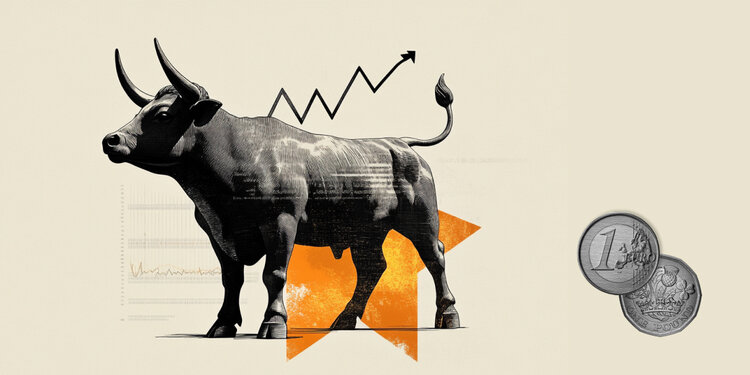- EUR/GBP strengthens to around 0.8615 in Thursday’s early European session.
- UK GDP contracted 0.1% MoM in May, weaker than expected.
- The attention will shift to the developments surrounding the US-EU tariff policy.
The EUR/GBP cross trades in positive territory near 0.8615 during the early European session on Friday. The Pound Sterling (GBP) edges lower against the Euro (EUR) after the release of UK growth numbers. Investors will closely monitor the United States (US)-European Union (EU) tariff policy headlines for fresh impetus.
Data released by the Office for National Statistics (ONS) on Friday showed that the UK economy shrank 0.1% MoM in May, compared to a contraction of 0.3% in April. This figure came in worse than the estimation of a 0.1% expansion in the reported period.
The UK economy has shrunk for the second month in a row, increasing market expectations that the Bank of England (BoE) will cut interest rates by more than investors had projected earlier. This might drag the GBP lower in the near term.
Meanwhile, the monthly Industrial Production fell by 0.9% MoM in May versus -0.6% prior. This reading came in lower than the market consensus of 0%. The GBP attracts some sellers in an immediate reaction to the downbeat UK economic data.
The shared currency faces some selling pressure after US President Donald Trump announced a new tariffs policy, adding to the uncertainty around his evolving trade policy. Trump announced a 35% tariff rate for goods imported from Canada, beginning August 1, and threatened to impose blanket tariffs of 15% or 20% on most other trade partners. Trump added that the members of the EU would get letters notifying them of new tariff rates “today or tomorrow.”
Traders will closely monitor the developments surrounding the US-EU tariff policy as the bloc is the largest trading partner of the US. Meanwhile, uncertainty surrounding the trade deal between the EU and the US could weigh on the EUR against the GBP.
GDP FAQs
A country’s Gross Domestic Product (GDP) measures the rate of growth of its economy over a given period of time, usually a quarter. The most reliable figures are those that compare GDP to the previous quarter e.g Q2 of 2023 vs Q1 of 2023, or to the same period in the previous year, e.g Q2 of 2023 vs Q2 of 2022.
Annualized quarterly GDP figures extrapolate the growth rate of the quarter as if it were constant for the rest of the year. These can be misleading, however, if temporary shocks impact growth in one quarter but are unlikely to last all year – such as happened in the first quarter of 2020 at the outbreak of the covid pandemic, when growth plummeted.
A higher GDP result is generally positive for a nation’s currency as it reflects a growing economy, which is more likely to produce goods and services that can be exported, as well as attracting higher foreign investment. By the same token, when GDP falls it is usually negative for the currency.
When an economy grows people tend to spend more, which leads to inflation. The country’s central bank then has to put up interest rates to combat the inflation with the side effect of attracting more capital inflows from global investors, thus helping the local currency appreciate.
When an economy grows and GDP is rising, people tend to spend more which leads to inflation. The country’s central bank then has to put up interest rates to combat the inflation. Higher interest rates are negative for Gold because they increase the opportunity-cost of holding Gold versus placing the money in a cash deposit account. Therefore, a higher GDP growth rate is usually a bearish factor for Gold price.
Read the full article here


